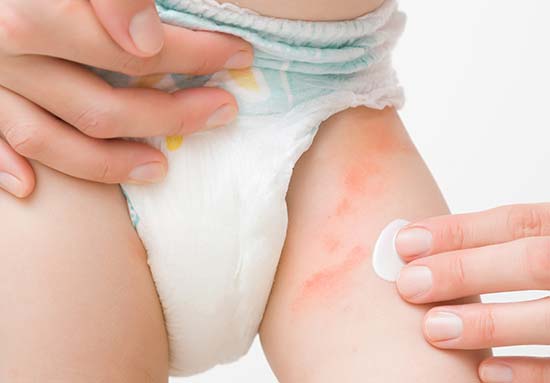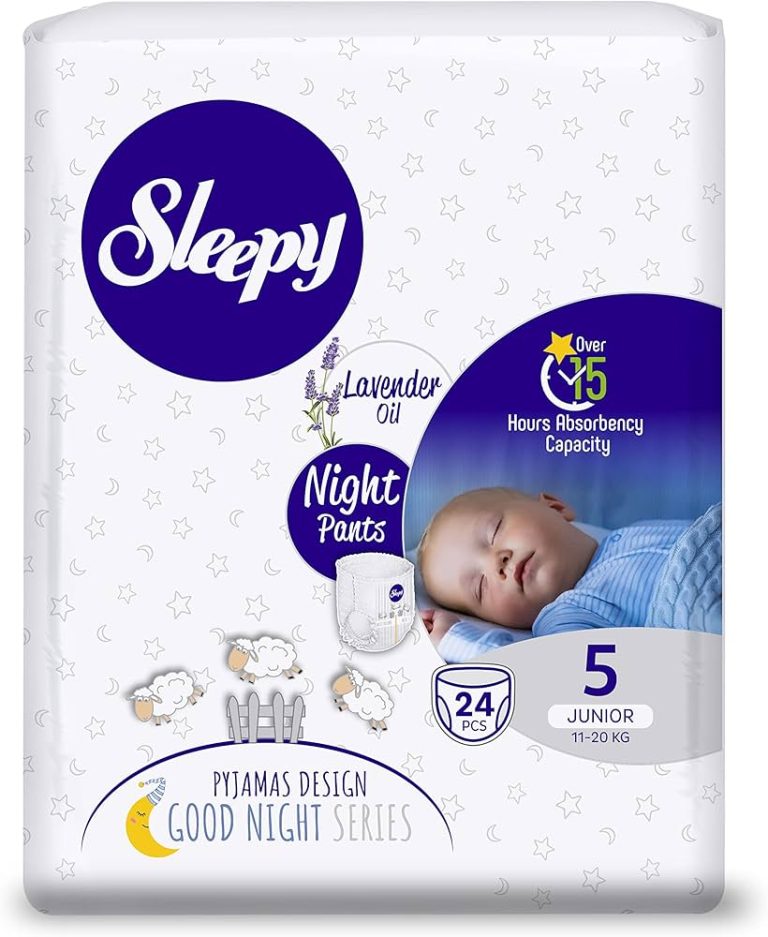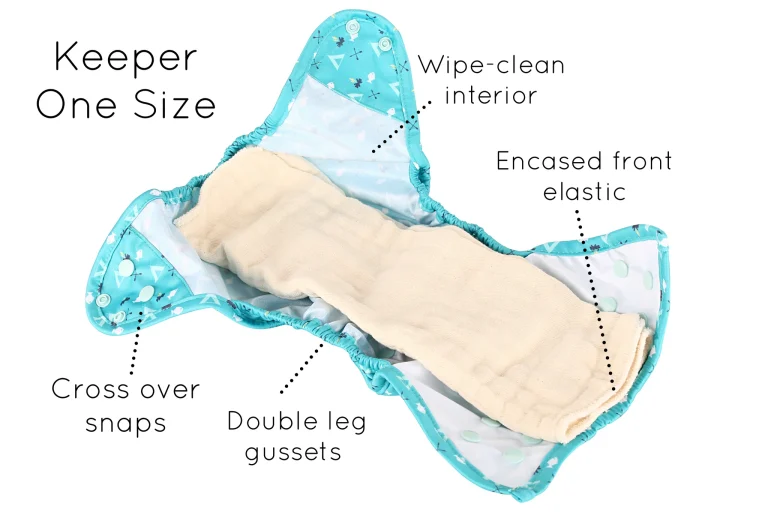How to Fix Baby Nappy Rash: Effective Solutions for Parents
To fix baby nappy rash, keep the area clean and dry. Apply a protective barrier cream regularly.
Nappy rash is common in infants and can cause discomfort. It occurs due to prolonged exposure to wet or soiled nappies. Ensuring the baby’s skin stays dry is crucial for prevention and treatment. Use gentle, fragrance-free wipes or water to clean the area.
Allow the skin to air dry before putting on a new nappy. Applying a thick layer of barrier cream helps protect the skin from irritants. Frequent nappy changes also reduce the risk of rash. If the rash persists, consult a pediatrician for further advice. Proper care and hygiene can effectively manage and prevent nappy rash, keeping your baby comfortable and happy.
Identifying Nappy Rash
Babies often experience nappy rash. Knowing how to identify it quickly can help. This section will guide you through recognizing the signs and types of nappy rash.
Common Symptoms
Nappy rash typically shows up as red patches on your baby’s skin. Here are some common symptoms to look out for:
- Redness and inflammation in the nappy area
- Dry, flaky, or peeling skin
- Small bumps or pimples
- Spots or blisters
- Baby seems uncomfortable or irritable during nappy changes
Types Of Nappy Rash
Different types of nappy rash can appear. Understanding these can help you treat them effectively.
| Type | Description |
|---|---|
| Chafing Rash | This rash appears where the nappy rubs against the skin. It often looks red and sore. |
| Yeast Infection | Caused by Candida, this rash is bright red and may have white, fluid-filled bumps. |
| Allergic Reaction | This rash may appear if your baby is allergic to nappy material or wipes. It may spread beyond the nappy area. |
| Bacterial Infection | This type of rash is often caused by bacteria like Staphylococcus. It can look like pimples or boils and may ooze pus. |
Identifying the type of nappy rash will help you choose the right treatment. If you’re unsure, consult a healthcare professional for advice.
Causes Of Nappy Rash
Nappy rash can cause discomfort to your baby. Understanding the causes is key to prevention and treatment. Knowing why a nappy rash occurs helps in selecting the right remedy. Let’s explore the main causes of nappy rash.
Irritation From Wetness
Wet nappies can irritate a baby’s delicate skin. Prolonged exposure to moisture breaks down the skin’s protective barrier. This makes the skin prone to rashes. Changing nappies frequently can help keep the skin dry. Using super-absorbent nappies can also be beneficial.
Chafing And Rubbing
Chafing and rubbing from nappies can cause a rash. Tight nappies or clothes can lead to friction. Friction irritates the skin, causing redness and rashes. Ensure the nappy fits well but is not too tight. Loose and breathable clothes can help reduce chafing.
Allergic Reactions
Some babies have sensitive skin. They can react to certain materials or products. Nappy materials, laundry detergents, or wipes can cause allergic reactions. Look for hypoallergenic products to reduce the risk of allergies. Avoid scented wipes or nappies to minimize skin irritation.
Preventive Measures
Baby nappy rash can be painful for your little one. Preventive measures help keep their skin soft and rash-free. Follow these simple steps to protect your baby’s delicate skin.
Frequent Nappy Changes
Changing nappies often is key to preventing rashes. Wet or soiled nappies irritate the skin. Change your baby’s nappy as soon as it becomes wet or dirty. Keep your baby dry and comfortable.
Gentle Cleansing
Clean your baby’s skin gently during nappy changes. Use a soft cloth and warm water. Avoid harsh soaps or wipes with alcohol. Pat the skin dry instead of rubbing. This keeps the skin healthy and prevents irritation.
Choosing The Right Nappy
Select the right nappy for your baby. Choose nappies that fit well and are highly absorbent. Look for nappies with breathable materials. This allows air to circulate and keeps the skin dry. Cloth nappies are a good option for sensitive skin.
| Preventive Measure | Key Benefit |
|---|---|
| Frequent Nappy Changes | Reduces skin irritation |
| Gentle Cleansing | Keeps skin healthy |
| Choosing the Right Nappy | Prevents rash development |
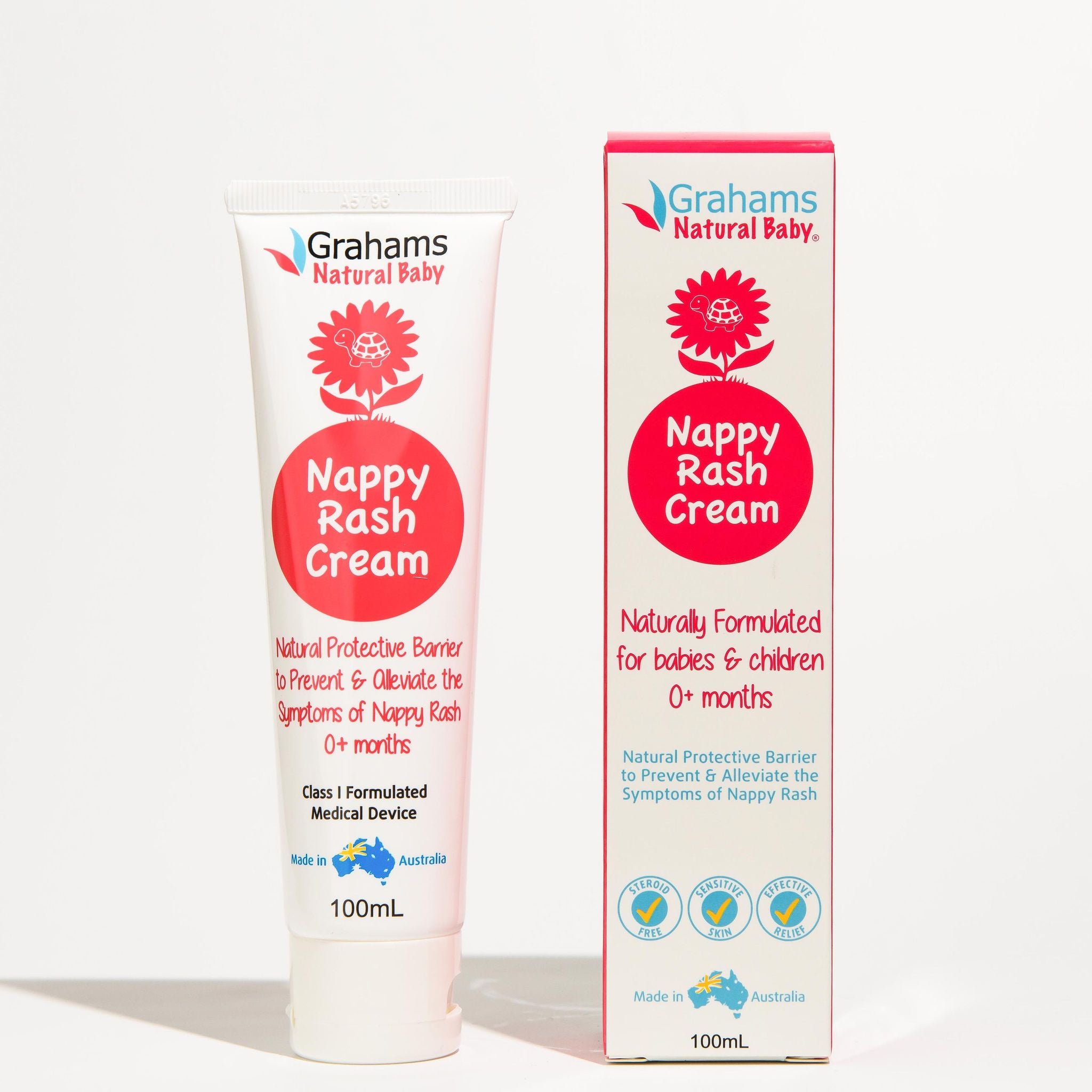
Credit: www.grahamsnatural.com
Home Remedies
Dealing with baby nappy rash can be stressful. But, home remedies offer simple and effective relief. These natural treatments are gentle on your baby’s skin. Below are some easy-to-follow remedies to help soothe nappy rash.
Oatmeal Baths
Oatmeal baths are excellent for soothing irritated skin. Oatmeal contains anti-inflammatory properties. It helps reduce redness and itching.
- Fill a bathtub with lukewarm water.
- Add one cup of finely ground oatmeal.
- Mix until the water turns milky.
- Soak your baby in the bath for 10-15 minutes.
- Pat dry gently with a soft towel.
Aloe Vera Gel
Aloe vera gel is another effective remedy. It has healing and soothing properties. Aloe vera can reduce inflammation and promote skin healing.
- Extract fresh aloe vera gel from the leaf.
- Apply a thin layer to the affected area.
- Allow it to dry before putting on a new nappy.
- Repeat this process 2-3 times a day.
Coconut Oil
Coconut oil is a natural moisturizer. It has antibacterial and antifungal properties. It helps protect the skin from infections.
- Take a small amount of virgin coconut oil.
- Warm it slightly in your hands.
- Apply it gently to the nappy rash area.
- Let it absorb fully into the skin.
- Use this remedy after every nappy change.
Over-the-counter Treatments
Dealing with baby nappy rash can be stressful for parents. Over-the-counter treatments provide quick relief. These treatments are easily accessible and effective. Let’s explore some common options.
Barrier Creams
Barrier creams create a protective layer on your baby’s skin. This layer shields the skin from moisture and irritants. Popular barrier creams include zinc oxide and petroleum jelly. Apply a thin layer after each diaper change. This helps keep the skin dry and prevents further irritation.
Antifungal Ointments
Antifungal ointments target yeast infections that cause nappy rash. These ointments contain active ingredients like clotrimazole or miconazole. Apply the ointment as directed on the packaging. Usually, a small amount is sufficient. Make sure the skin is clean and dry before application.
Hydrocortisone Creams
Hydrocortisone creams are mild steroids that reduce inflammation. These creams help soothe severe nappy rash. Use a low-strength hydrocortisone cream (0.5% or 1%). Apply a thin layer to the affected area. Do not use it for more than a few days. Always consult your pediatrician before using these creams.
| Product Type | Key Ingredient | Application Tips |
|---|---|---|
| Barrier Cream | Zinc Oxide, Petroleum Jelly | Apply after each diaper change |
| Antifungal Ointment | Clotrimazole, Miconazole | Use as directed on clean, dry skin |
| Hydrocortisone Cream | Hydrocortisone (0.5% or 1%) | Consult pediatrician, use sparingly |
When To See A Doctor
Most baby nappy rashes clear up with proper care. But some may need medical attention. Knowing when to see a doctor is crucial for your baby’s health.
Persistent Rash
If the rash lasts more than a week, see a doctor. Long-lasting rashes may need stronger treatments.
Use the following signs to identify a persistent rash:
- Rash doesn’t improve after home treatment.
- Baby seems uncomfortable or in pain.
- The rash spreads or gets worse.
Signs Of Infection
Infections need medical care. Look for these signs:
- Blisters or open sores.
- Pus or yellow crusts.
- Red, swollen, or warm skin.
- Fever or unusual fussiness.
Unusual Symptoms
Some symptoms need immediate attention. Contact your doctor if you see:
- Rashes with a fever.
- Rashes that bleed.
- Rashes with a bad smell.
- Rashes that don’t respond to treatments.
These signs could indicate a more serious issue.
| Symptom | Action |
|---|---|
| Persistent Rash | Consult a doctor if lasting over a week |
| Signs of Infection | Seek immediate medical care |
| Unusual Symptoms | Contact your doctor right away |
Diet And Nappy Rash
Dealing with baby nappy rash can be challenging for any parent. One important factor to consider is your baby’s diet. What your baby eats can significantly affect the condition of their skin, especially their sensitive nappy area.
Impact Of Diet On Rash
A baby’s diet directly impacts their skin health. Certain foods can cause irritation and lead to nappy rash. It’s essential to monitor what your baby consumes to help prevent and treat nappy rash.
For instance, acidic foods can make urine and stool more irritating. This, in turn, can exacerbate nappy rash. It’s crucial to identify and limit foods that might contribute to this issue.
Foods To Avoid
Some foods are more likely to cause nappy rash. Here are key foods to avoid:
- Citrus Fruits: Oranges, lemons, and grapefruits are high in acid.
- Tomatoes: Tomato-based foods can be harsh on sensitive skin.
- Spicy Foods: Any spicy ingredient can irritate the skin.
- Dairy Products: Some babies are sensitive to dairy.
By avoiding these foods, you can help reduce the risk of nappy rash.
Hydration Importance
Keeping your baby well-hydrated is crucial. Proper hydration helps maintain healthy skin. Water dilutes the urine, making it less irritating to the skin.
Ensure your baby drinks enough fluids throughout the day. This can include breast milk, formula, or water, depending on their age and dietary needs.
A well-hydrated baby is less likely to suffer from severe nappy rash.
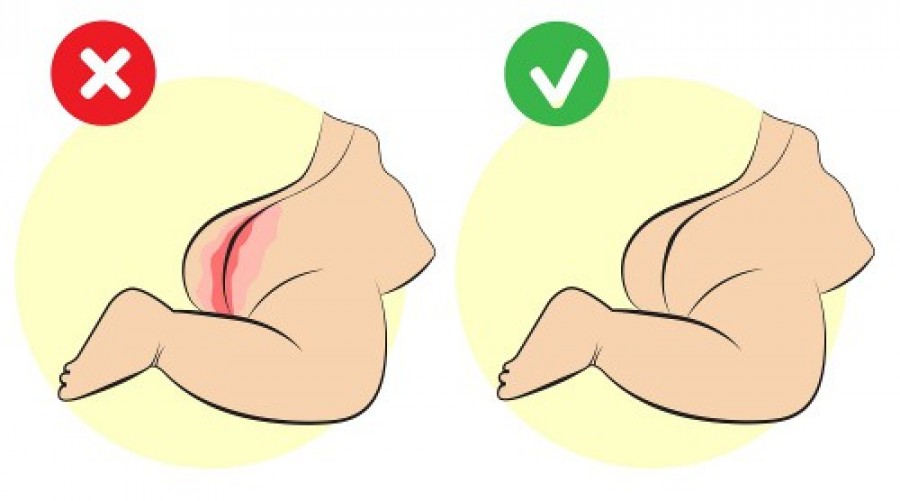
Credit: www.babyinfo.com.au
Skin Care Tips
Babies have sensitive skin, which makes them prone to nappy rash. Taking care of the nappy area can help prevent and heal rashes. Here are some skin care tips to keep your baby’s skin healthy and rash-free.
Proper Nappy Area Care
Keeping the nappy area clean and dry is essential. Change nappies frequently to prevent prolonged exposure to moisture. Use warm water and a soft cloth to clean the area. Pat the skin dry gently with a towel.
Allow some diaper-free time each day. This helps the skin breathe and stay dry. Apply a thin layer of barrier cream to protect the skin from moisture.
Choosing Baby-friendly Products
Select products specifically designed for babies. These products are usually free from harsh chemicals. Look for hypoallergenic and fragrance-free options. Always check the label before buying.
Avoid using wipes with alcohol or perfumes. They can irritate your baby’s skin. Instead, choose gentle, water-based wipes.
Avoiding Harsh Chemicals
Harsh chemicals can worsen nappy rash. Opt for natural or organic products. Ingredients like aloe vera and chamomile are soothing.
Avoid using baby powders with talc. Talc can irritate the lungs if inhaled. Cornstarch-based powders are a safer alternative.
Here’s a table of baby-friendly ingredients vs. harsh chemicals:
| Baby-Friendly Ingredients | Harsh Chemicals |
|---|---|
| Aloe Vera | Alcohol |
| Chamomile | Perfumes |
| Coconut Oil | Parabens |
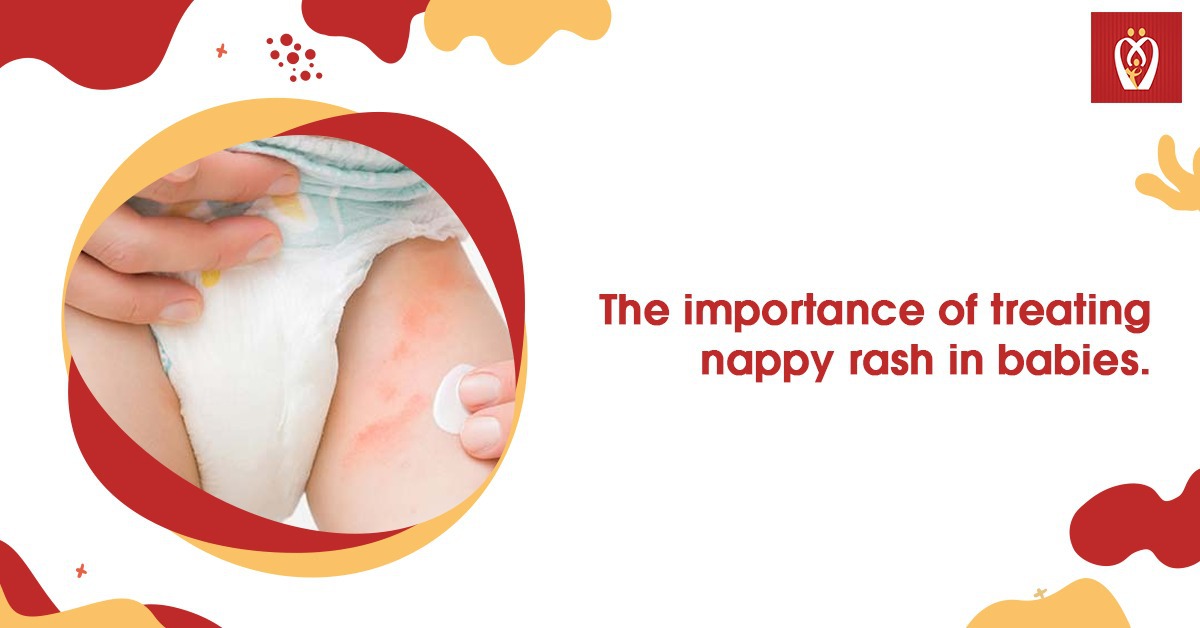
Credit: nurturey.com
Frequently Asked Questions
What Causes Baby Nappy Rash?
Nappy rash is caused by prolonged exposure to wet or dirty nappies. Irritation from friction, yeast infections, and sensitive skin can also contribute. Ensuring frequent diaper changes can help prevent it.
How Can I Prevent Nappy Rash?
To prevent nappy rash, change nappies frequently and keep the area dry. Use a barrier cream and ensure the skin is clean. Also, let the baby’s skin breathe by allowing nappy-free time.
What Are The Best Treatments For Nappy Rash?
The best treatments include applying a barrier cream, keeping the area clean and dry, and using gentle, fragrance-free wipes. If the rash persists, consult a pediatrician.
Can Certain Foods Cause Nappy Rash?
Yes, certain foods can cause nappy rash, especially acidic foods like citrus fruits and tomatoes. Introducing new foods slowly and monitoring your baby’s reaction can help identify triggers.
Conclusion
Easing your baby’s nappy rash requires gentle care and the right products. Keep the area clean and dry. Use barrier creams to protect sensitive skin. Opt for breathable nappies and avoid tight clothing. Consult a pediatrician for persistent rashes. Your baby’s comfort is worth the effort.

